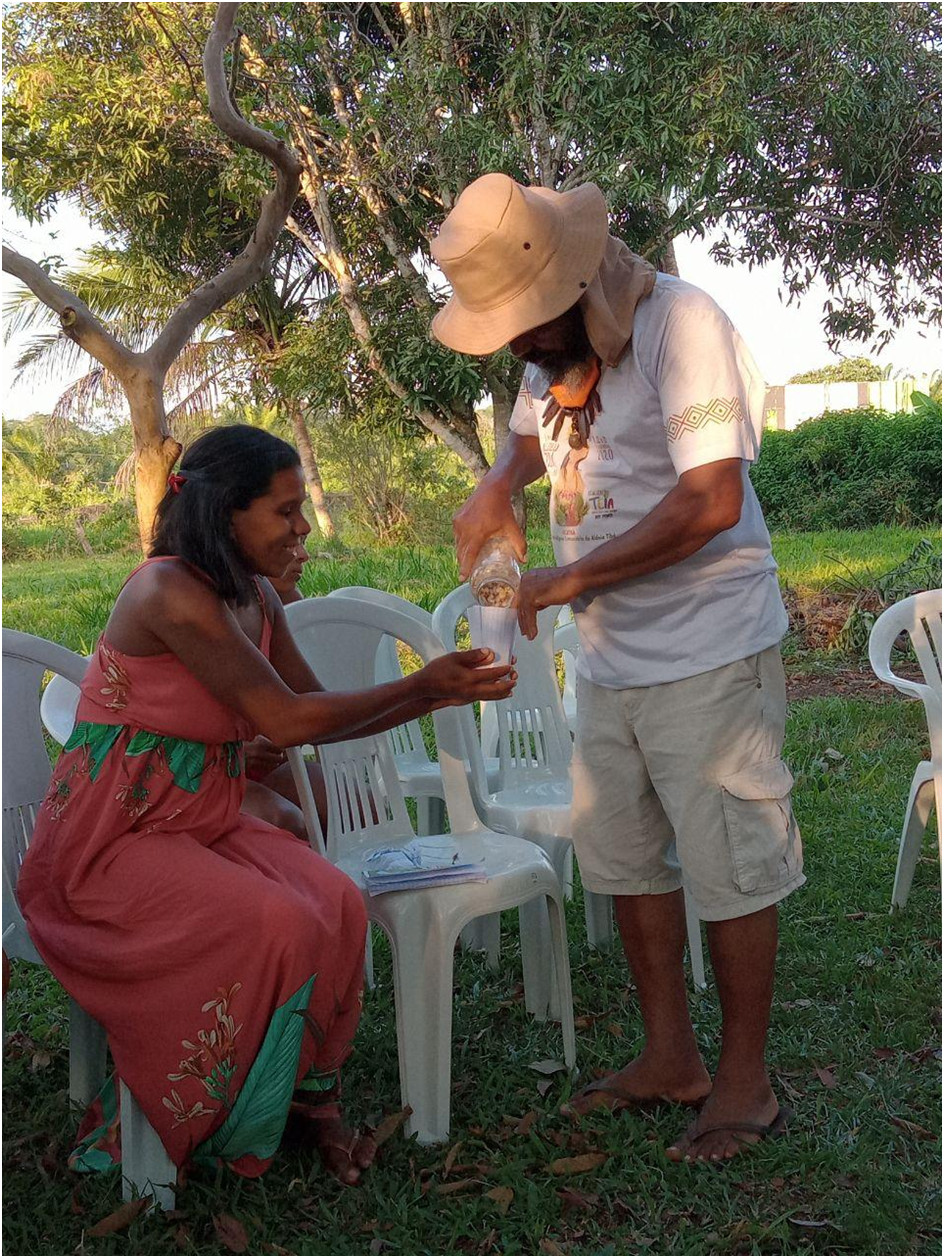
For the portuguese version, click here
By Mariana Cruz.
At the dawn of October of a difficult year, the scorching sun did not prevent the meeting, work and reflection. Dozens of peasants from MST settlements and camps gathered for the 1st Pre-Journey of Agroecology in Paulo Jackson, one of the 7 areas of Agrarian Reform that make up the Ojefferson Brigade, in the cocoa-growing microregion of Bahia. It was a time to consolidate the alliance between the Brigade and the Web of The People. Under our feet, three common tasks for the revolution: conquest of land, construction of territory and food sovereignty. On the horizon, the possibility of not only escaping the misery of the end of the world, but of rebuilding another one with plenty, with dignity, with hope and with a good deal of love. In this text, we record some of the richness of that meeting.
To understand the difficulty to face it
Part of the day was devoted to studying the current situation, always in contrast to what happened in the past. For Crislane Santos de Jesus, state leader of the MST and settled in Paulo Jackson, “it is important to understand the difficulty to face it; it is important to know the role of the peoples and the land in this system to challenge it ”.
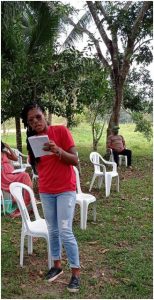
In this part of the world, intensive cocoa production has filled the pockets of a few landowners for almost the entire 20th century. To give you an idea, the export of the fruit accounted for about 60% of the State’s GDP in the 1970s, with the municipality of Ibirapitanga, where Paulo Jackson Settlement is located, being one of the 10 largest production centers in the State. What has been advertised as a success, however, has been sustained by a huge set of injustices. The region’s cocoa farms survived thanks to the exploitation of nature and workers.
There, all crop management – from planting to harvest – was carried out by people subjected to degrading work situations, many of them without even access to wages. “Contractors”, for example, were responsible for opening the Atlantic forest and planting cocoa trees. In return, they did not receive salaries, only the promise that, after fulfilling the “Contract”, they would receive for the improvements made. Needless to say, this “direct negotiation” ended in the farmer’s failure to fulfill his commitment – if not in threat and persecution if workers dared to demand their rights. Situations like that have repercussions today, in different ways. Even today, there is news of work analogous to slavery on farms in the region, for example.
In addition, the constant need to increase profits made farmers intensify their crops, despite the ecological effects that this policy could cause. Especially from the 1970s onwards, the Atlantic forest that offered shade to the cacao trees was simply devastated, in order to increase the number of cacao trees per hectare, or was replaced by exotic shading species such as those of the genus Eritrina, for example. The witches’ broom and brown rot plagues came to collect the bill: for at least 30 years the recovery of the forest and soil have been on the agenda for those who live in the region.
To complete this scenario, it is also important to draw attention to one last point: the question of land ownership. Unlike other regions in Brazil, the size of each cocoa farm does not account for around 1,000 hectares. This did not, however, shake the poignant inequality in access to land. Many of the owners own several properties in the region. This is the case of the Canta Galo farm – today the Paulo Jackson settlement. Its former owner, former banker Ângelo Calmon de Sá, boasts 15 rural properties in the state of Bahia alone. In addition, many of the lands where cocoa “thrived” are the fruit of doubtful transactions, to say the least. The fences that demarcate the limits of several of these farms carry in their history the theft of small family properties and the expulsion of indigenous peoples from their traditional territories.
This is definitely not a portrayal of the abundance that indigenous people, quilombolas and peasants know how to manage. About 20 years ago, the destiny of that territory changed radically: the occupation undertaken by MST broke through the fences of the Canta Galo farm – as it did repeatedly in the cocoa-growing region. Men, women, young and old people came together to react to the destruction and oppression perpetrated by agribusiness, dreaming of building abundance and freedom on a piece of ground. “The revolution is made with simple things”, Mestre Joelson Ferreira, from the Web of the People, never tires of repeating. But he was also the one who remembered, quoting Neto Onirê, coordinator of the Ojefferson Brigade, that the fight begins with the dispute over land:
“It’s like Neto says, ‘if an armadillo show with two tails, we plucked one out’. We only left it with one, because nature gave armadillos only one tail. The “armadillos” we were talking about at that time were the landowners who came to face us. So, now is the time that a wild jaguar appears and we have to organize ourselves as catitus to overcome the jaguar. And if we don’t face that moment now, it could be the last moment of humanity on earth. If we don’t face imperialism, if we don’t face capitalism and if we don’t face this government, we probably won’t have much time here on earth”.
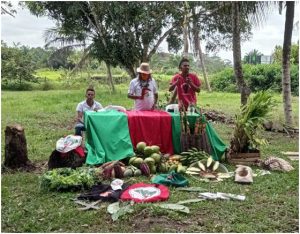
Black, indigenous and popular alliance
What has been done in the past 30 years to guarantee minimally democratic access to land now needs to be expanded. After retaking land, it was necessary to rebuild a different way of inhabiting it; one where the freedom of humans and of the land meet. In Crislane’s analysis, once the scenario is understood, it is possible to perceive the similarities between communities that are often thought of separately:
“The first landless people were blacks. If we look at our territories, we are quilombos indeed. Our territories are true quilombos. It’s a fact. It’s resistance”.
Quilombos are one of the concrete faces of insubmission to the racist and colonialist power of the State; they are territories for the construction of a full, autonomous and free life. It is the same in the 7 areas of the Ojefferson Brigade, where people and lands are allied to face the wrath of the estate, the racist State, and capitalism. On that day of October, people gathered there did not hear empty promises like those from candidates for the city hall or the city council, typical on this time of the year. What they heard, the possibility of building, with their own hands, autonomy and food sovereignty:
“Our sickles never respected the fences that prevented us from having access to food and land, this is a black, indigenous and popular alliance. We want freedom and that’s why we plant food”, said Neto Onirê.
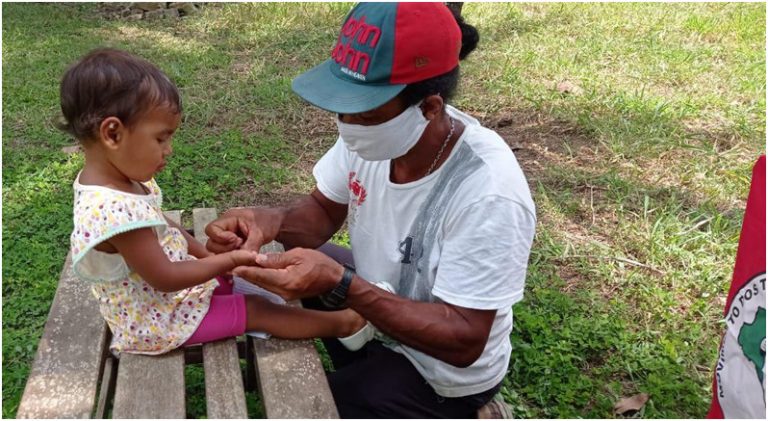
The words of Joelson, Neto and Crislane are not metaphors. In the capitalist system, the peoples and the land had their wealth expropriated. The health, economic and ecological crisis that emerges as a result of this system will lead us to collapse and genocide. Therefore, it is up to the black, indigenous and popular alliance to resume, in fact, the possibility of building another present and another future, “before the world ends”. Thus Joelson reaffirmed the purpose of the dialogue proposed in that meeting:
“We are building the Web of the People, it is not a movement. It is siding with MST, it is siding with the quilombolas, it is siding with the peasants, it is siding with all the people, it is siding with the people on the periphery, to the people of Reaja ou Será Morto (React or You Will Be Killed), who are the black people who is there on the outskirts of Salvador, on the outskirts of Rio de Janeiro, on the outskirts of São Paulo, everywhere, being murdered by the police”.
Good seed
Building the confluence between peoples, territories and demands is not a task for words and denunciation alone. The alliance is concretely woven, insofar as it promotes freedom with concrete evidences of it. The ability to produce abundance is what will allow for true independence. With a full table, it is not necessary for the peoples to submit themselves to those who, in exchange for daily bread, demand votes and subservience to a political agenda that does not benefit them and their territories. With diverse and abundant farms, all living beings are satisfied: people, animals and the land itself. It is even possible to weave true solidarity and self-defense. An example of this is the tons of food donated by peasants from Brigade Ojerffesson, from Camp Carlos Marighella (Ipiaú-BA), to the black people on the outskirts of Salvador, during the covid-19 pandemic.
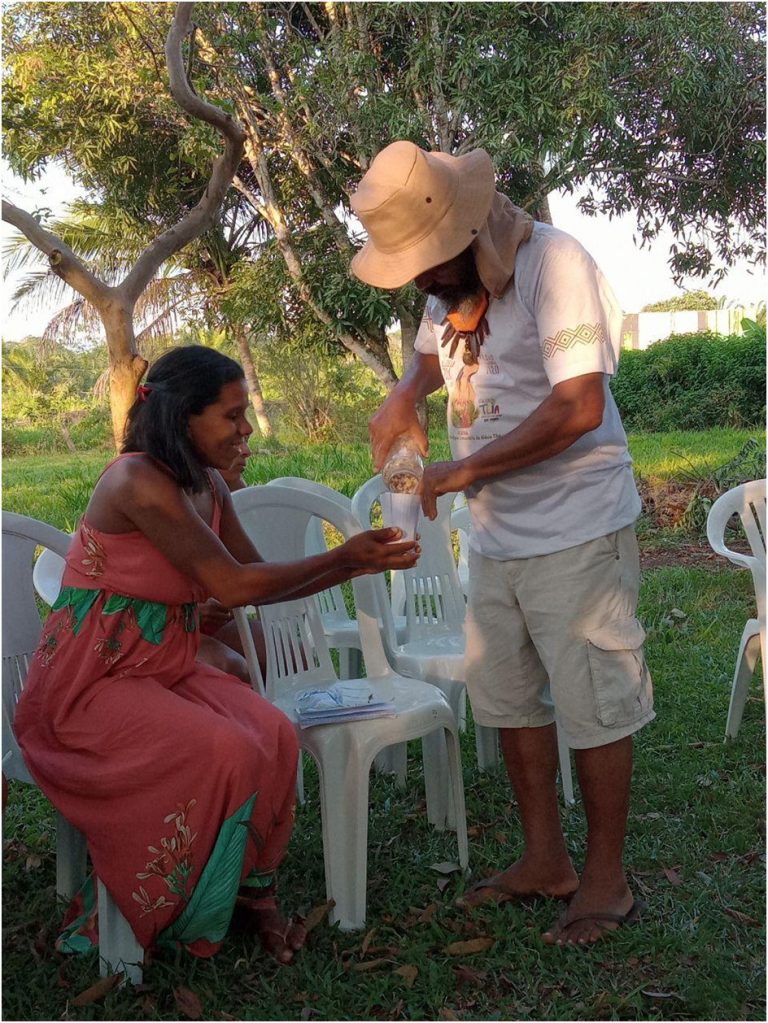
Therefore, to the speeches and analyzes carried out in the 1st Pre-Journey, seeds and seedlings were added. There were 650 seedlings of cocoa, 500 of açaí, creole seeds of rice, corn, beans, cowpeas and pumpkin – all cultivated and reproduced in territories of the Web of the People. Each of the 7 agrarian reform areas present in the meeting chose two people who will be guardians of the seeds. Nelma, from the Mariana Settlement, in the municipality of Camamu, celebrates: “this is a unique moment for us. Rescuing creole seeds is a very important step, since it is difficult to produce with good seeds”. She will have the task of planting them and watching over the crops so that they can safely multiply and thus be distributed to the entire community. The 1st Pre-Journey of the Ojefferson Brigade is just a moment among many who weave a wide, broad and historic alliance – one in which catitus are no longer just jaguar food. Among their weapons is the exact ability to produce food. Thus, the conquest of food sovereignty is the cornerstone of revolution – one that takes place collectively and in the hot and humid weather of the earth’s womb.

[…] Para a versão em inglês, clique aqui […]